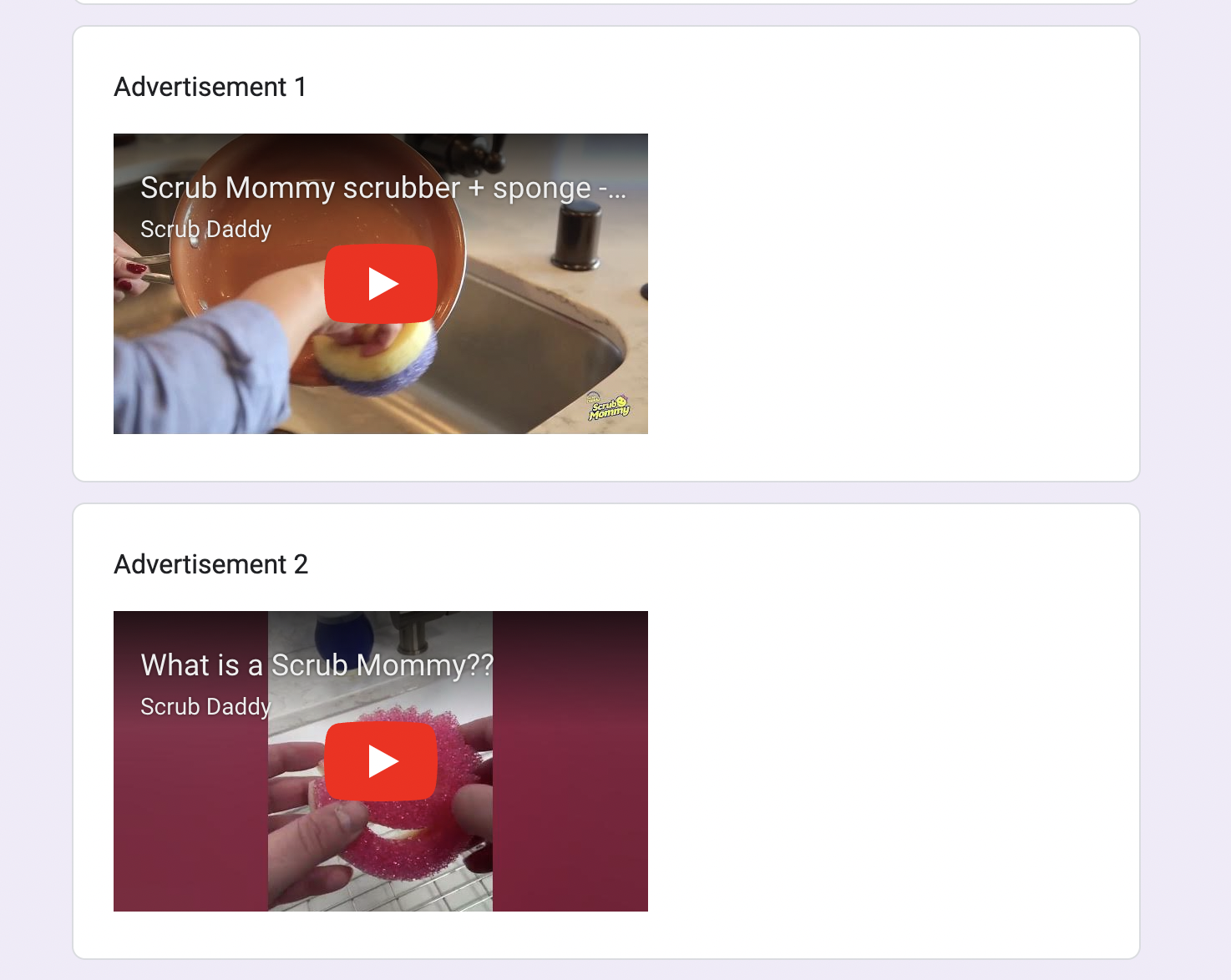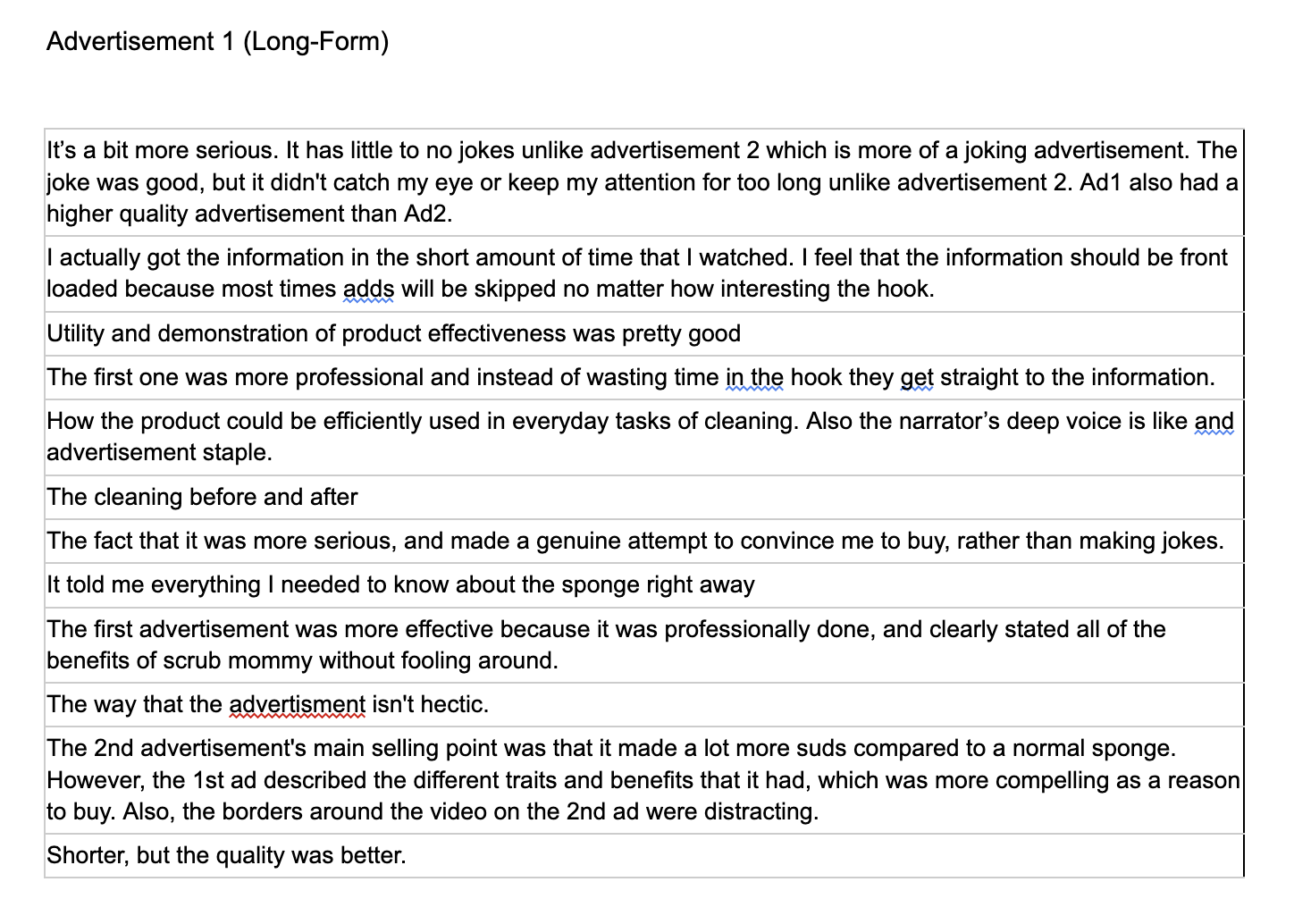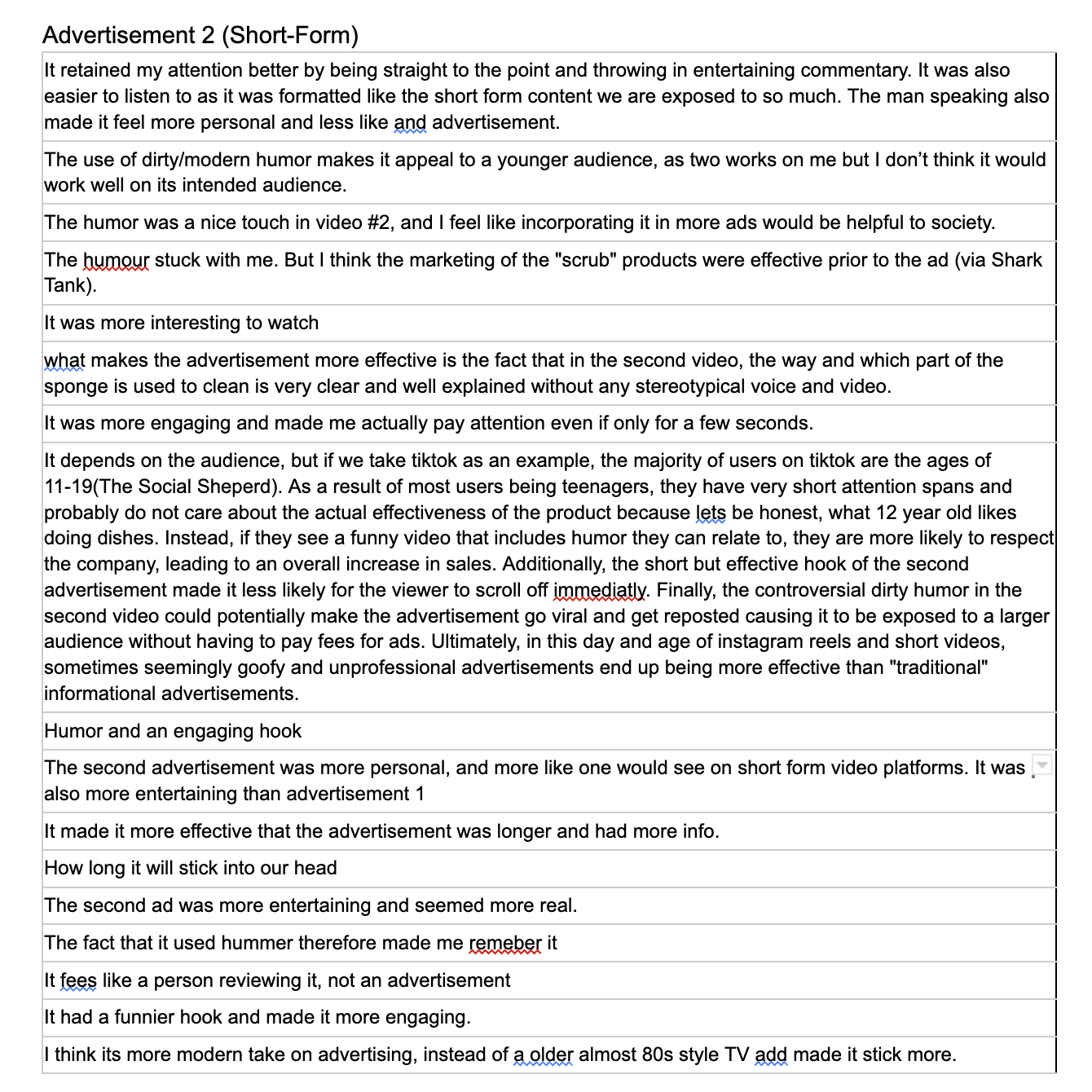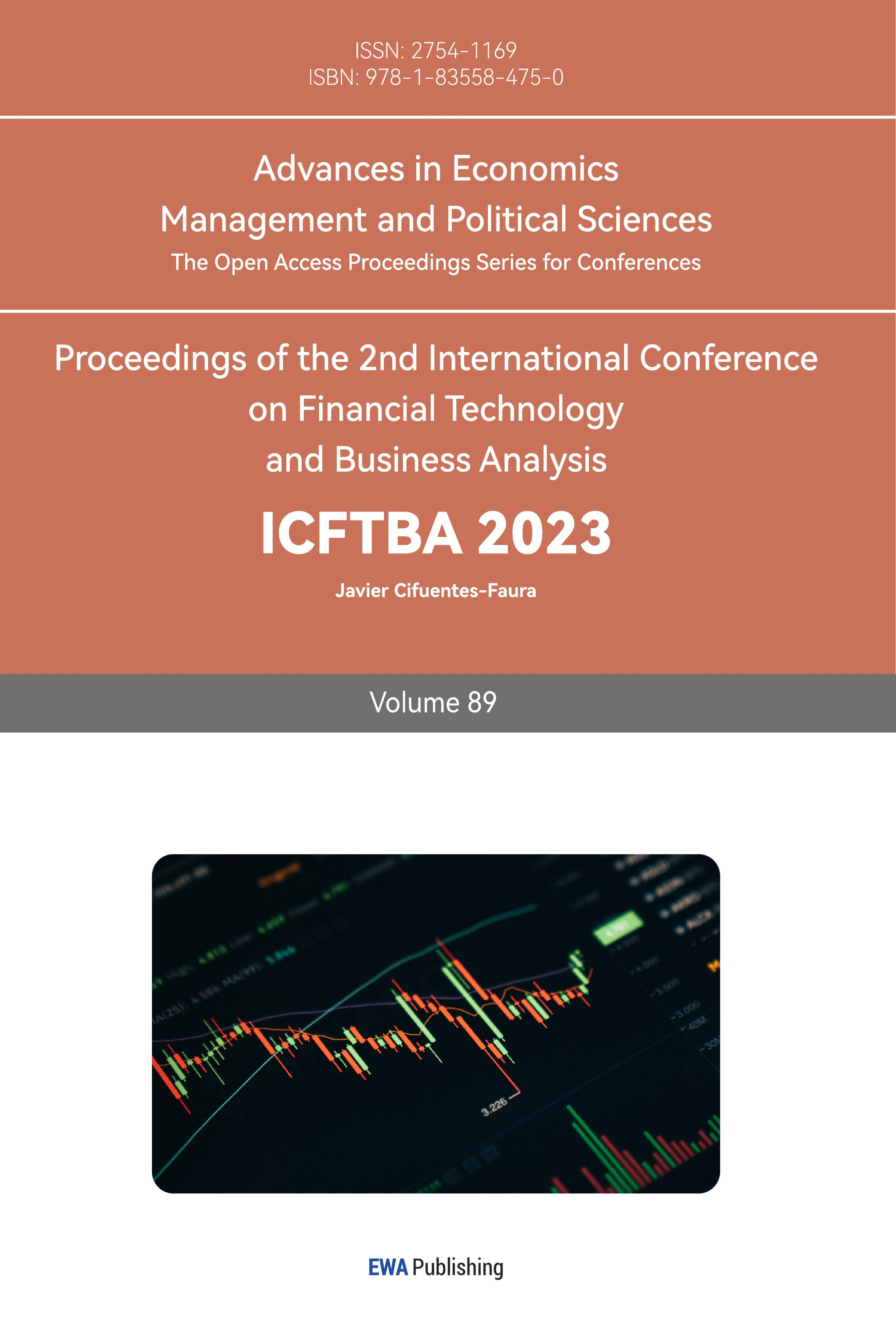1. Introduction
The advent of short-form video sites (i.e., TikTok and Twitter) has completely shaken modern media consumption. Nowadays, social media websites host streams of 10-20-second micro prose as opposed to media with longer runtime. This change in media length preference has opened attractive new opportunities for advertisers and marketers. The time requirement for advertisements on short-form video sites decreases significantly, favoring low-budget marketing teams that do not have the capital required to create a cinematic 1-2-minute ad. This favoritism towards smaller companies is further enhanced by the low production value of self-produced videos, as advertisements with cruder filming are more likely to fit in with other short-form videos.
Thus, as opposed to a minute or even two-minute-long traditional advertisements, marketing teams are now developing ads with an average runtime of around 10-20 seconds and a style that conforms with the viewing experience of short-form video. This study investigates if, and to what extent, short-form advertisements have an advantage over regular advertisements.
2. Background Information
Short-form video is commonly defined as any type of video content with a duration within five minutes [1]. The media type first surfaced around 2012 and is commonly credited to social media platforms Snapchat and Vine. Short-form video content on these platforms initially consisted of clipped portions of longer video media, called “clips.” Clips would feature an outlandish or humorous highlight of a longer portion of media in an attempt to amuse its audience in a very short amount of time. Since then, short-form video media has evolved from clips of long-form media to microprose skits tailored for short video lengths. TikTok, Instagram, and YouTube are currently the most popular short-form video platforms, with short-form video being TikTok’s only platform media.
Surprisingly, short-form video advertising is believed to precede short-form video platforms. The first forms of short-form video advertising can be seen around the start of the 21st century as crude 5-6 second GIFS inserted into various web pages [2]. However, the method was considered ineffective. Ads would often hinder the customer’s ability to use the site they were visiting. Shifting customer focus from the content of the ad to removing the ad from the web page entirely. Short-form video ads homogenous with other short-form media, on the other hand, surfaced with the rise of Vine in 2013. These advertisements were mainly made by independent and young business owners who had limited capital but extensive netizen experience [2].
Currently, an estimated 90.5% of all internet users currently watch short-form videos on short-form social media platforms [3]. The rise of social media and short-form media prompted the creation of a new business model for small-to-medium-sized businesses called Social commerce [4], named for its reliance on social and short-form media advertisements. These advertisements commonly feature an amateur-esque video aesthetic to fit in with other user-created content and create the perception of customer word-of-mouth for increased relatability [1]. The objective of this was to decrease the distinction between advertisements and content so that ads would have a stronger earned media attraction, thanks to the consumer tendency to value peer reviews over company advocacy [3]. Now, advertisements commonly feature skits, subtitles, and a home environment, making it easy to assume that the video was created by individuals rather than corporations.
3. Criteria Development
The specific advertisement benefits and effects that short-form advertisements have over traditional advertising are largely unclear and present a novel field of research. To make a substantive comparison between the effects of the two, quantitative and comparable criteria must first be established that accurately represent each advertisement. As this study focuses on the advertising effects and benefits that each form of advertising brings, the criteria should be based on the techniques and traits that relate most to customer influence, which in turn drives advertisement success. This section will delve into the process and justification behind deriving judging criteria to compare both forms of advertisements.
Several primary factors that determine the effectiveness of an advertisement include customer trust, cost, contagiousness, media manipulability, duration, polish, reach, and relevance [5]. Of these factors, cost and media manipulability of the advertisement have no direct effect on the customer and are not related to customer interaction and will therefore not be considered in this investigation.
Customer trust is crucial to the effectiveness of an advertisement as trust generates more customer complicity and serves as the foundation for any ad influence on a customer’s behavior. To establish trust, advertisements use an array of ethos persuasion techniques, such as the use of influencers and familiar, established brands, to generate trust between the customer and the advertised product. By far the most effective and volatile method of generating trust is through “Earned” advertising or word-of-mouth [6,7]. As opposed to paid advertising, which uses public idols and figures the customer has never interacted with in person, earned media uses non-public figures that customers interact with personally to advertise for a product. Relatable, non-public figures that customers identify with generate far more predisposed trust toward advertisements compared to public figures like influencers and idols [8]. Assuming the opportunities for influencing customers by using public figures in both traditional and short-form media are the same, the advertisement that generates more trust would, therefore, generate more earned advertising and word-of-mouth surrounding its product.
Also crucial to an advertisement’s influence over its customers is the polish, or quality, of the advertisement. Advertising quality can be manipulated to communicate messages that potential customers prefer to create trust. Traditionally, higher-quality advertisements have been preferred as they increase product attractiveness with a higher-quality appearance [7]. With the rise of short-form media, however, lower-quality advertising has also found significant success. Lower-quality advertisements focus on relatability to the customer, often portraying characters representing the ideal customer advertising the product in a DIY (do-it-yourself) fashion. The ad is intended to resemble the plethora of user-created content found on social media platforms and reaches out to customers from a personal, earned media level rather than a corporate, paid media level. The potential effects on marketing effectiveness that advertisement polish has makes it primary criteria to be studied.
In addition to polish and trust, consumer reach is also a crucial indicator of advertisement effectiveness. Defined as the amount of new prospective customers exposed to an advertisement, reach not only provides a quantitative measure of the expanse of an advertisement’s influence but also can provide insights into its sway over consumer perception and attitude. High advertisement reach can catalyze a variety of consumer engagements, ranging from increased brand social currency to direct influence over sales. Higher advertisement reach also increases the probability of consumer market expansion as more individuals are exposed to the product advertisement [6]. Thus, advertisement reach is also a crucial indicator of advertising effectiveness.
Finally, advertisement relevance– the alignment of advertisement content with the interests and needs of its target audience– is also a crucial indicator of advertising effectiveness. Studies have shown that relevant advertisements significantly increase the likelihood of customer engagement and purchasing intent [9]. When advertisements are perceived as relevant to a consumer’s needs, they are far less likely to be skipped over, thus highly increasing advertisement runtime and effectiveness. Higher degrees of relevance also correlate with increased sales rates and word-of-mouth, both related to advertising efficiency.
Thus, out of these factors, customer trust, polish, reach, and relevance were considered the most representative traits of each advertisement as they reflect both production quality and represent elements of the advertisement that interact with and influence customers.
4. Method
Given these four criteria for measuring advertising effectiveness, a study was conducted to determine the effectiveness of short-form advertising compared to long-form advertising. Google Forms was used to create a 6-question long, self-administered survey that required respondents to watch two advertisements, one long-form, and one short-form. Respondents then had to select the advertisement that best fit the above criteria and finally select the one that persuaded them the most.
The advertisements used in this survey were selected from the “Scrub Daddy” YouTube channel. The “Scrub Daddy” is a variation of the kitchen sponge created by detailer Aaron Krause. Krause created the company after leaving many stock sponges unused from a previous venture in his automobile detailing shop. The sponge features a traditional composition of a soft and hard side but has a unique design that allows for easier cleaning of kitchen utensils. This product was chosen as its utility and attractiveness were less likely to be biased toward any age group or gender since all students and faculty in the school have requirements and experiences cleaning dorm and personal kitchens.
The long-form advertisement was a traditional-style three-minute advertisement that showcases the product’s abilities and specifications and offers a premium price. The short-form advertisement was a minute-long clip reviewing the product against other sponge products. The survey was split into two sections: A “general” section, which surveyed respondents on their preferred media type and most memorable advertisement format, and a “specific” section, which could only be accessed after the respondents had watched the two advertisements.

Figure 1: Questions featured in the “general” section of the survey


Figure 2: Advertisements used in the survey
The survey was sent to a population of 600 high school students and faculty ranging from 15-52 years of age. The survey was offered via e-mail with the random chance of winning a cash prize offered as an incentive. Of the population of 600, 46 responses were collected.
5. Results
Table 1: Participant advertisement preferences by question
Question | Prefer Short-Form Advertisement | Prefer Long-Form Advertisement | Total |
For entertainment, what type of advertisement do you watch more on a day-to-day basis? | 26 | 20 | 46 |
Which type of ad do you end up remembering more on a regular basis? | 26 | 20 | 46 |
Which advertisement made the product seem more trustworthy? | 12 | 34 | 46 |
Which advertisement made the product seem more relevant to your life? | 19 | 27 | 46 |
Which advertisement made the best attempt to convince you to buy its product? | 30 | 16 | 46 |

Figure 3: Respondents’ justifications for preferring long-form advertisement as most persuasive.

Figure 4: Respondents’ justifications for preferring short-form advertisements as most persuasive.
6. Conclusion
There are several intriguing findings from this investigation. Firstly, the survey results suggest that short-form advertisements are disadvantaged over long-form advertisements on nearly all advertisement effectiveness factors determined in Criteria Development. In particular, participants reported that the long-form advertisement elicited more consumer trust, had more production polish, and made the product feel more relevant. The only categorical advantage short-form advertisements possessed over long-form advertisements was consumer reach, as participants reported seeing and remembering short-form advertisements more than long-form advertisements.
Despite the disadvantages the short-form advertisement in this survey had over its long-form counterpart, an overwhelming majority of participants considered the short-form advertisement to be the most effective and persuasive. This result suggests that the criteria of trust, polish, and relevancy do not strongly correlate to the effectiveness of short-form advertisements despite their strong influence over long-form advertisements.
Participants who chose the short-form advertisement over the long-form advertisement in effectiveness cited humor, audience-friendly commentary, and demonstrated personality as crucial traits that influenced their decision. Despite the better production quality and trustworthiness of the long-form advertisement, the short-form advertisement was reported to be far more relatable, personal, and memorable, inciting higher viewer engagement and, thus, more effective persuasion. In conclusion, short-form advertisements coherent with social media culture were found to have unique and significant advantages over traditional long-form advertisements.
These results implicate that modern short-form ads' consumer-oriented relatability and reach better engage and persuade viewers than traditional long-form ads' product-oriented polish, relevance, and trustworthiness. As modern media further shortens and the volume of media consumption for the individual steadily increases, creating a relatable and engaging narrative is now more important than the product itself in the works of an effective advertisement.
References
[1]. Tuan, Pham & Chan, Le & Huy, Dinh & Anh, Nguyen & Trang, Nguyen & Giang, Pham & Uyen, Nguyen. (2023). Effects of Advertising Value and Attitude on the Purchase Intention Through Short-Form Video Advertising on Social Media: Empirical Research on Gen Z in Vietnam. Middle East Journal of Applied Science & Technology. 06. 42-59. 10.46431/MEJAST.2023.6105.\
[2]. Potrel, V. (2022, September 12). Council post: Five insights into the popularity of short-form video content. Forbes. https://www.forbes.com/sites/forbescommunicationscouncil/2022/09/06/five-insights-into-the-popularity-of-short-form-video-content/?sh=501bfbd679e5
[3]. Lin Xiao & Xiaofeng Li & Yucheng Zhan. (2023) Exploring the factors influencing consumer engagement behavior regarding short-form video advertising: A big data perspective. Journal of Retailing and Consumer Services, 70, 103-170. https://doi.org/10.1016/j.jretconser.2022.103170.
[4]. Busalim, A.H. and Hussin, A.R.C. (2016) Understanding Social Commerce: A Systematic Literature Review and Directions for Further Research. International Journal of Information Management, 36, 1075-1088.https://doi.org/10.1016/j.ijinfomgt.2016.06.005
[5]. Montgomery, A.L. Applying quantitative marketing techniques to the Internet, Interfaces, 2001; 31(2):90- 108.
[6]. Baltas, G. Determinants of Internet advertising effectiveness: an empirical study. International, Journal of Market Research. 2003; 45(4):505-513.
[7]. Berger, J. (2016). Contagious: Why things catch on. Simon & Schuster Paperbacks.
[8]. Atiq M, Abid G, Anwar A, Ijaz MF. Influencer Marketing on Instagram: A Sequential Mediation Model of Storytelling Content and Audience Engagement via Relatability and Trust Information. 2022; 13(7):345. https://doi.org/10.3390/info13070345
[9]. Celsi, R. L., & Olson, J. C. (1988). The role of involvement in attention and comprehension processes. Journal of Consumer Research, 15(2), 210-224. Keller, Ed, and Brad Fay. “Word-of-Mouth Advocacy: A New Key to Advertising Effectiveness.” Journal of Advertising Research 52, no. 4 (December 1, 2012): 459–64. https://doi.org/10.2501/JAR-52-4-459-464.
Cite this article
Wang,J.Q. (2024). Investigating the Effectiveness of Short Form Media Advertisements Compared to Long Form Media Advertisements. Advances in Economics, Management and Political Sciences,89,98-103.
Data availability
The datasets used and/or analyzed during the current study will be available from the authors upon reasonable request.
Disclaimer/Publisher's Note
The statements, opinions and data contained in all publications are solely those of the individual author(s) and contributor(s) and not of EWA Publishing and/or the editor(s). EWA Publishing and/or the editor(s) disclaim responsibility for any injury to people or property resulting from any ideas, methods, instructions or products referred to in the content.
About volume
Volume title: Proceedings of the 3rd International Conference on Financial Technology and Business Analysis
© 2024 by the author(s). Licensee EWA Publishing, Oxford, UK. This article is an open access article distributed under the terms and
conditions of the Creative Commons Attribution (CC BY) license. Authors who
publish this series agree to the following terms:
1. Authors retain copyright and grant the series right of first publication with the work simultaneously licensed under a Creative Commons
Attribution License that allows others to share the work with an acknowledgment of the work's authorship and initial publication in this
series.
2. Authors are able to enter into separate, additional contractual arrangements for the non-exclusive distribution of the series's published
version of the work (e.g., post it to an institutional repository or publish it in a book), with an acknowledgment of its initial
publication in this series.
3. Authors are permitted and encouraged to post their work online (e.g., in institutional repositories or on their website) prior to and
during the submission process, as it can lead to productive exchanges, as well as earlier and greater citation of published work (See
Open access policy for details).
References
[1]. Tuan, Pham & Chan, Le & Huy, Dinh & Anh, Nguyen & Trang, Nguyen & Giang, Pham & Uyen, Nguyen. (2023). Effects of Advertising Value and Attitude on the Purchase Intention Through Short-Form Video Advertising on Social Media: Empirical Research on Gen Z in Vietnam. Middle East Journal of Applied Science & Technology. 06. 42-59. 10.46431/MEJAST.2023.6105.\
[2]. Potrel, V. (2022, September 12). Council post: Five insights into the popularity of short-form video content. Forbes. https://www.forbes.com/sites/forbescommunicationscouncil/2022/09/06/five-insights-into-the-popularity-of-short-form-video-content/?sh=501bfbd679e5
[3]. Lin Xiao & Xiaofeng Li & Yucheng Zhan. (2023) Exploring the factors influencing consumer engagement behavior regarding short-form video advertising: A big data perspective. Journal of Retailing and Consumer Services, 70, 103-170. https://doi.org/10.1016/j.jretconser.2022.103170.
[4]. Busalim, A.H. and Hussin, A.R.C. (2016) Understanding Social Commerce: A Systematic Literature Review and Directions for Further Research. International Journal of Information Management, 36, 1075-1088.https://doi.org/10.1016/j.ijinfomgt.2016.06.005
[5]. Montgomery, A.L. Applying quantitative marketing techniques to the Internet, Interfaces, 2001; 31(2):90- 108.
[6]. Baltas, G. Determinants of Internet advertising effectiveness: an empirical study. International, Journal of Market Research. 2003; 45(4):505-513.
[7]. Berger, J. (2016). Contagious: Why things catch on. Simon & Schuster Paperbacks.
[8]. Atiq M, Abid G, Anwar A, Ijaz MF. Influencer Marketing on Instagram: A Sequential Mediation Model of Storytelling Content and Audience Engagement via Relatability and Trust Information. 2022; 13(7):345. https://doi.org/10.3390/info13070345
[9]. Celsi, R. L., & Olson, J. C. (1988). The role of involvement in attention and comprehension processes. Journal of Consumer Research, 15(2), 210-224. Keller, Ed, and Brad Fay. “Word-of-Mouth Advocacy: A New Key to Advertising Effectiveness.” Journal of Advertising Research 52, no. 4 (December 1, 2012): 459–64. https://doi.org/10.2501/JAR-52-4-459-464.









